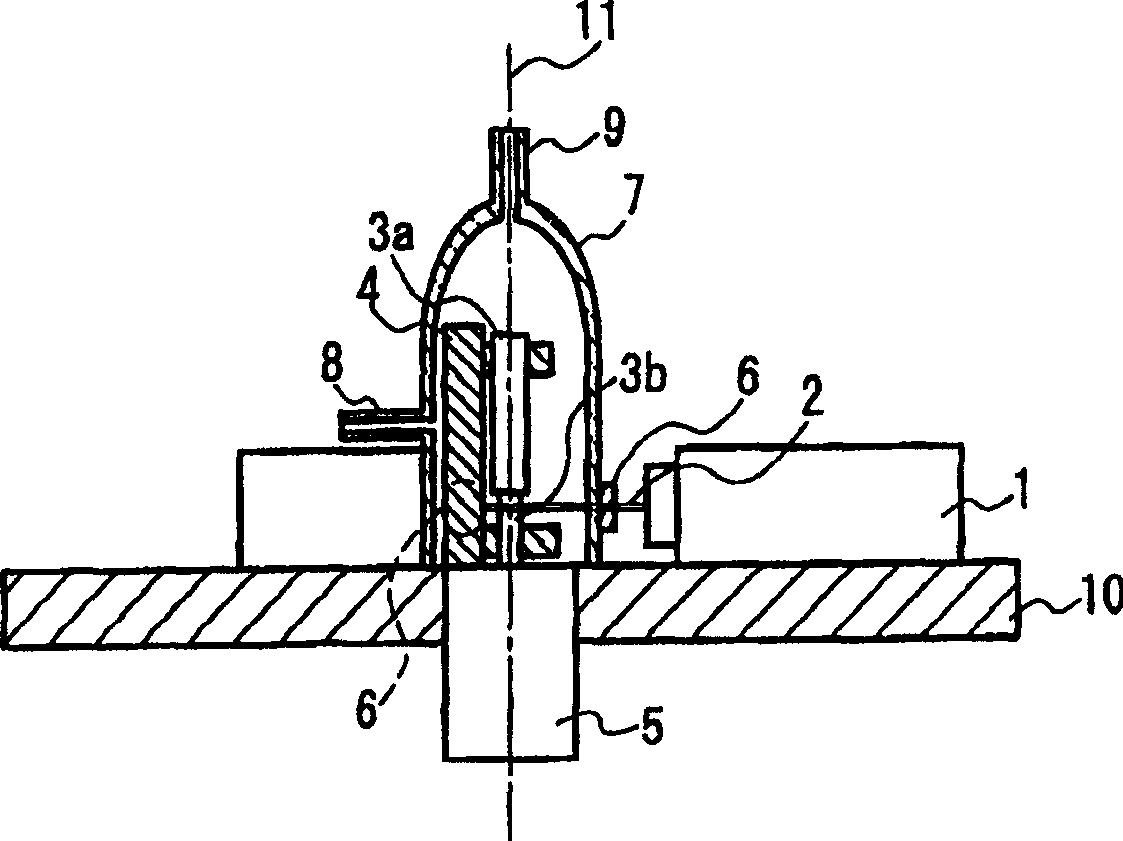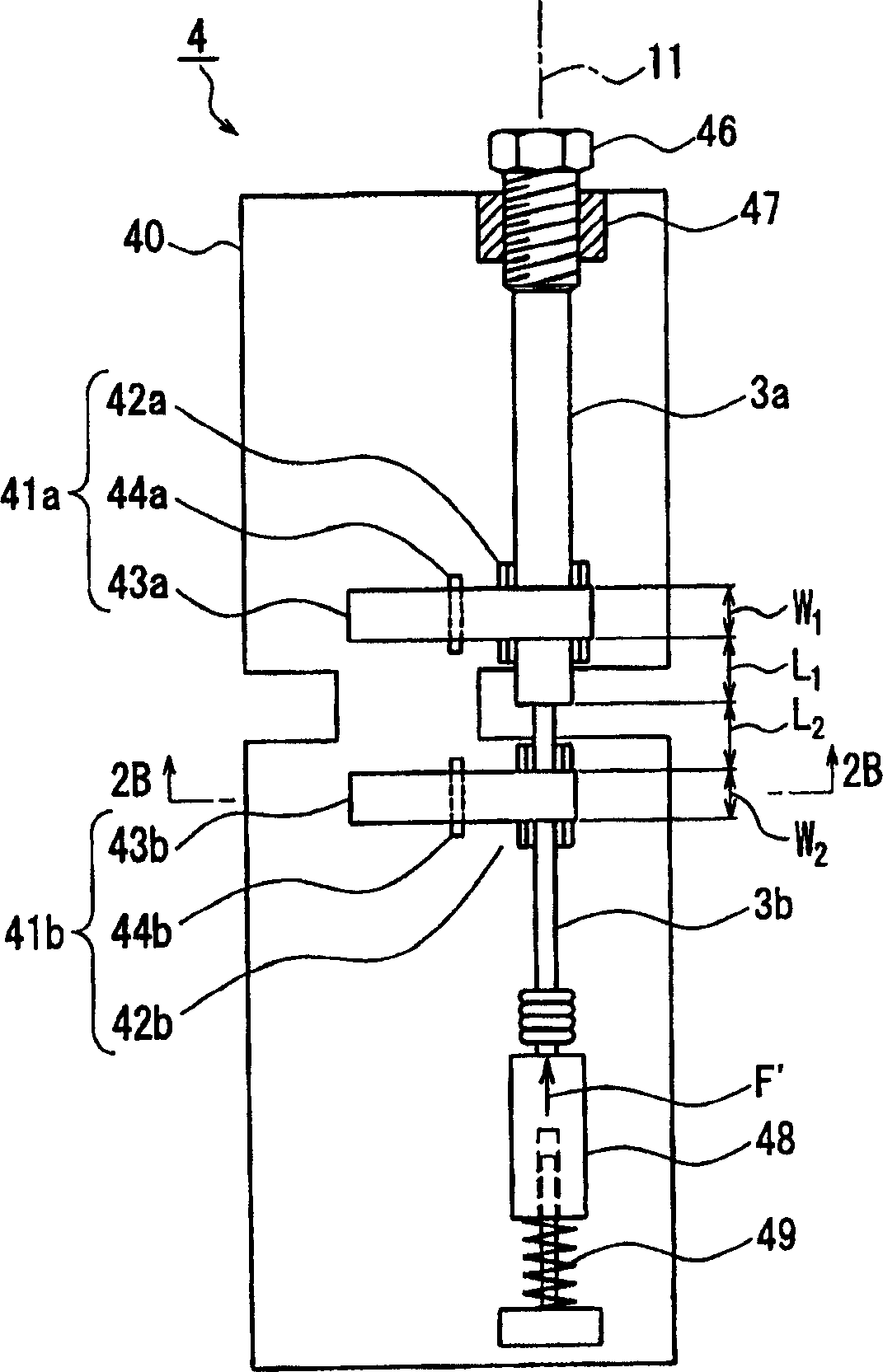Electrode and metallic vapour discharge lamp
A conductive metal and electrode technology, applied in the field of electrodes, can solve problems such as uneven distribution of heat along the circumferential direction, unguaranteed strength, and difficulty in reliable interface bonding, and achieve the effects of reducing discreteness and improving welding strength
- Summary
- Abstract
- Description
- Claims
- Application Information
AI Technical Summary
Problems solved by technology
Method used
Image
Examples
Embodiment 1
[0047] Next, specific examples corresponding to Embodiment 1 will be described.
[0048] The first electrode part 3a is a rod-shaped part with a diameter of 1.2 mm and a length of 8.25 mm, which is composed of a conductive cermet with a composition composition of 50% alumina and 50% molybdenum (by weight). For the second electrode part 3b, a rod-shaped part made of tungsten and having a diameter of 0.71 mm and a length of 22.3 mm was used.
[0049] The laser irradiation unit 1 uses a semiconductor laser (wavelength 800 nm, output power 130 W), and three units are radially arranged at intervals of 120 degrees on the horizontal plane around the center line 11 . Each laser 2 having a rectangular (WL3mm×WS0.5mm) cross-sectional shape is irradiated on the second electrode part at a distance D=0.5mm downward from the butt surface 17 of both the first electrode part 3a and the second electrode part 3b 3b on. The laser irradiation time was 1.3 seconds.
[0050] A schematic cross-se...
Embodiment 2
[0064] Next, specific examples corresponding to Embodiment 2 will be described.
[0065] Using the same first electrode part 3a made of conductive cermet and the second electrode part 3b made of tungsten as in Example 1 shown in Embodiment 1, the two electrode parts are welded according to the welding method of Embodiment 2. .
[0066] The welded portion of the obtained electrode, and the welded portion 18 of Example 1 are schematically shown. Figure 4 Similarly, a Mo-W alloy layer is formed on the entire end surface of the second electrode component 3b, and an aluminum oxide layer is formed on the outer periphery of the welded portion. The outer diameter of the welded portion satisfies the dimensional accuracy of the electrode (1.2mm±0.2mm). In addition, the mechanical strength of the welded portion and its discreteness were at the same level as those of the electrode of Example 1.
[0067] In the above-mentioned Embodiments 1 and 2, the coils 60a, 60b are provided only o...
PUM
| Property | Measurement | Unit |
|---|---|---|
| Diameter | aaaaa | aaaaa |
| Diameter | aaaaa | aaaaa |
Abstract
Description
Claims
Application Information
 Login to View More
Login to View More - R&D
- Intellectual Property
- Life Sciences
- Materials
- Tech Scout
- Unparalleled Data Quality
- Higher Quality Content
- 60% Fewer Hallucinations
Browse by: Latest US Patents, China's latest patents, Technical Efficacy Thesaurus, Application Domain, Technology Topic, Popular Technical Reports.
© 2025 PatSnap. All rights reserved.Legal|Privacy policy|Modern Slavery Act Transparency Statement|Sitemap|About US| Contact US: help@patsnap.com



